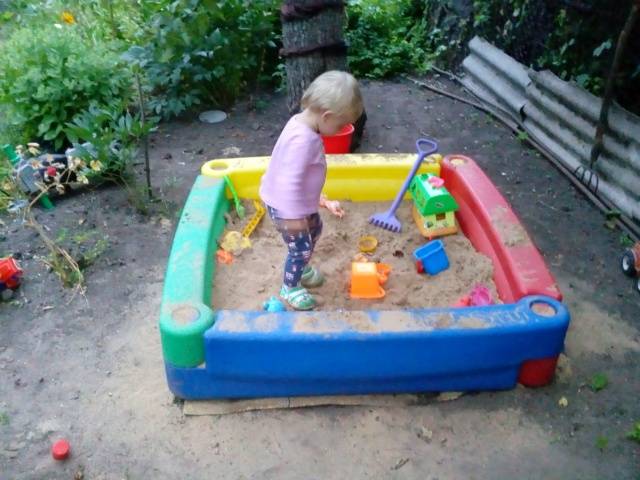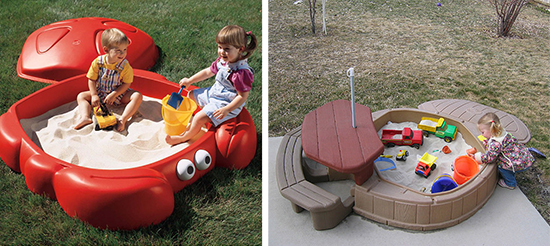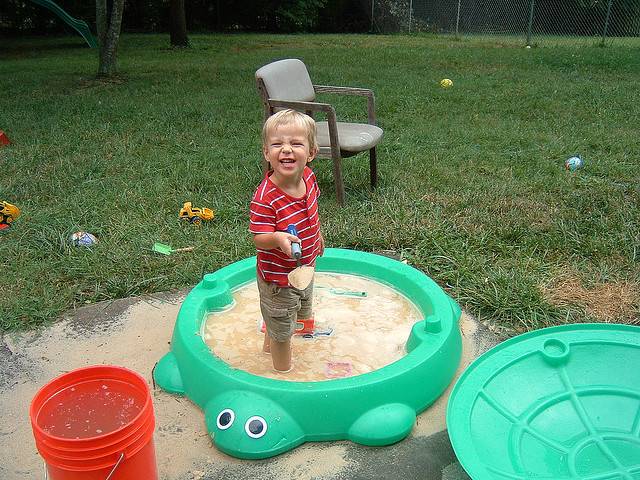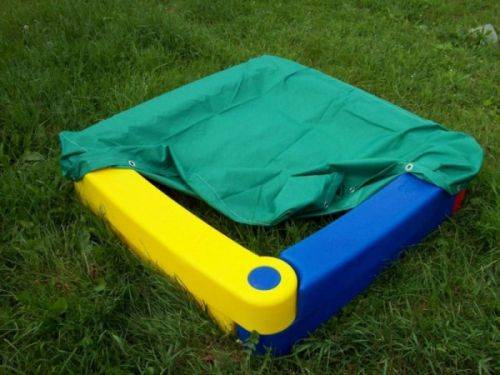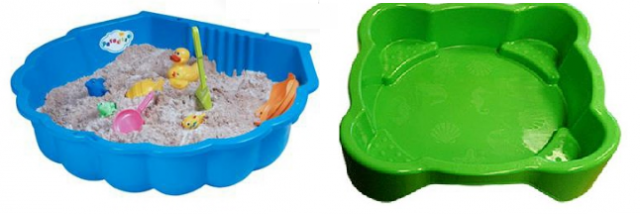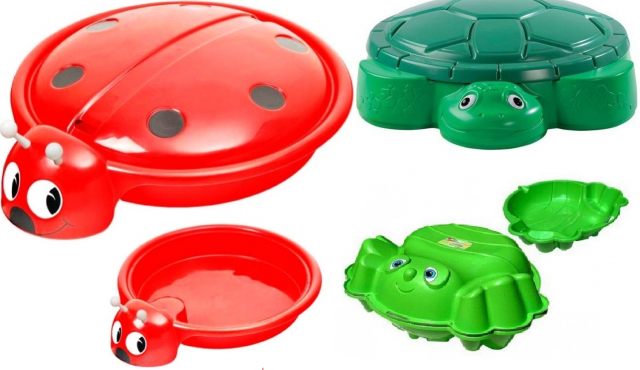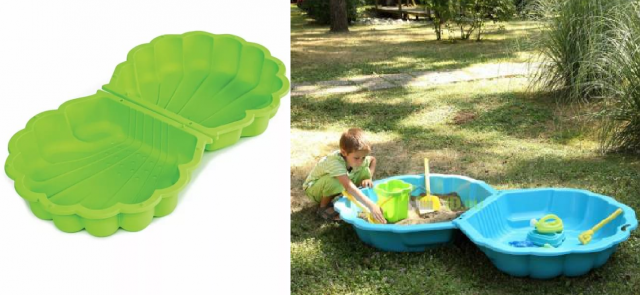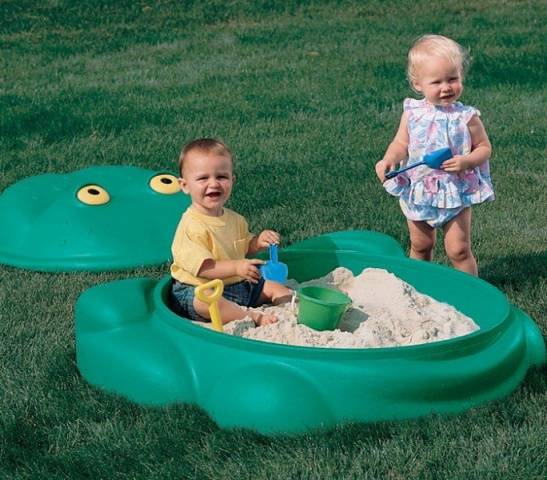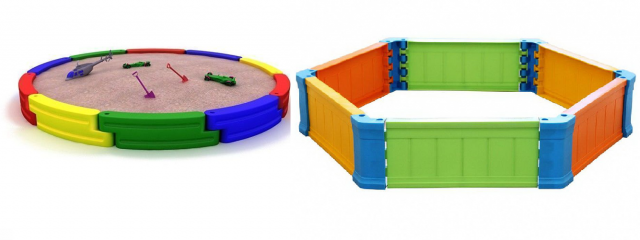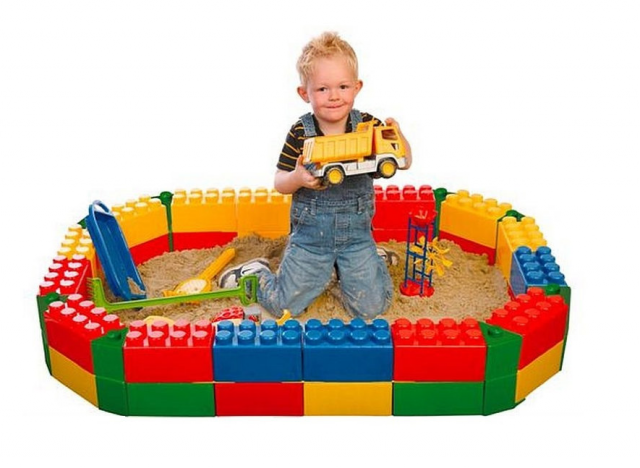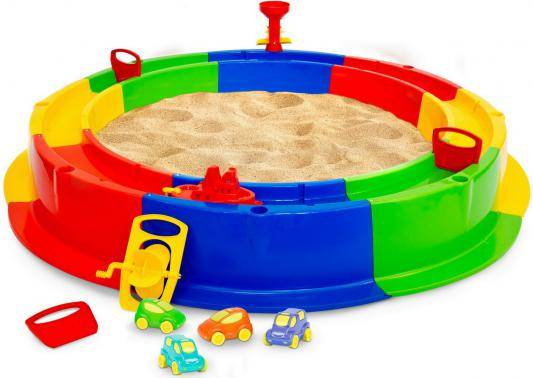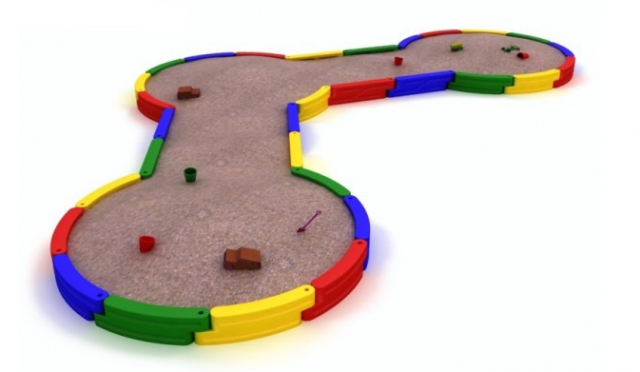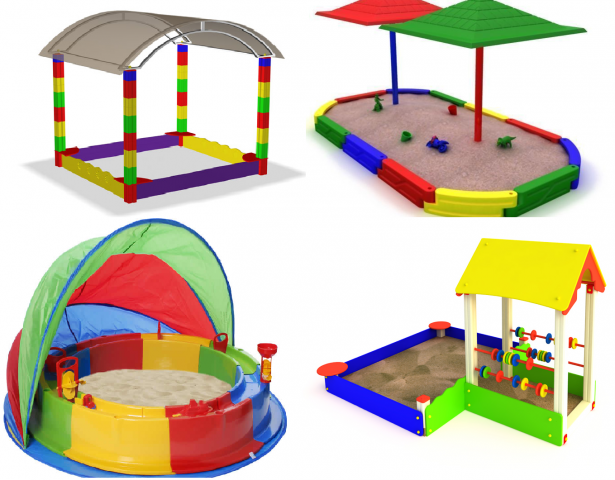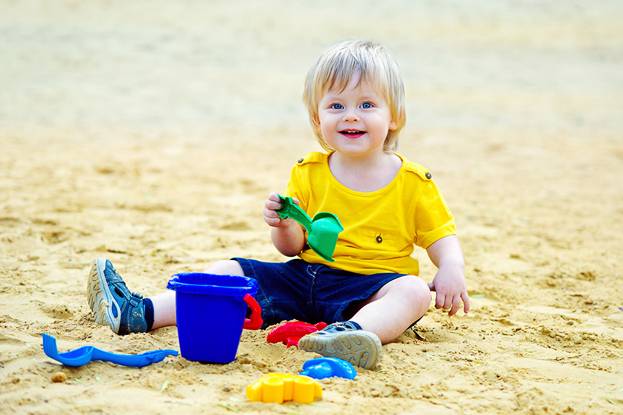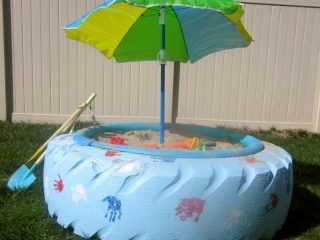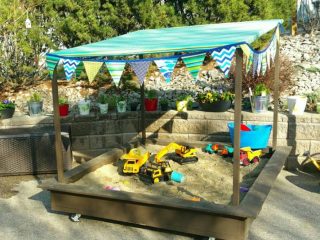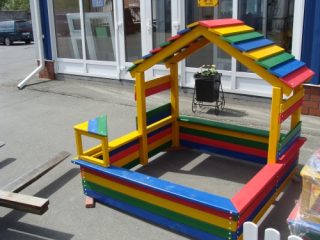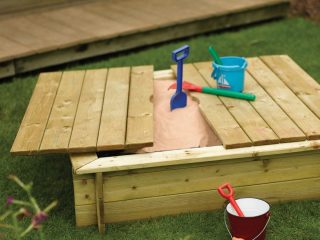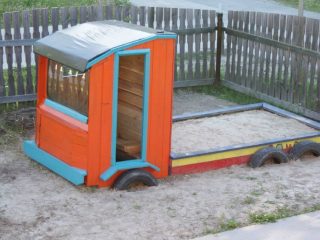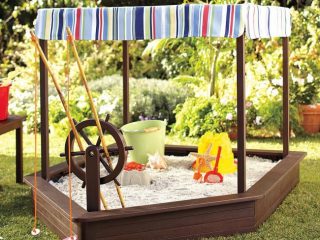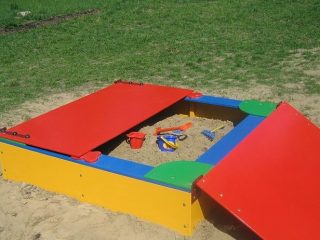Content
Many families try to spend their free summer time at their summer cottage. For adults, this is a way to step away from everyday problems, gain peace from working with the land and grow a crop of healthy vegetables with your own hands. But children do not always like such solitude outside the city. Often they simply don’t know what to do in their summer cottage. In this case, parents must solve the problem of children's leisure time. The simplest option is to create a playground. Its elements can be swings, rocking chairs and, of course, a sandbox. You can make a sandbox with your own hands from available materials, such as boards or logs. Plastic sandboxes for summer cottages are also an excellent option, since this material has a number of significant advantages. Plastic sandboxes are available in a wide range on the market. When choosing a particular model, it is necessary to take into account not only its aesthetics, but also its functionality. We’ll talk more about plastic sandboxes later.
Advantages and disadvantages of plastic structures
Plastic sandboxes captivate children and adults with their bright colors and original design.For example, on sale you can find designs in the form of a frog, turtle or dog. In addition to an excellent aesthetic appearance, they have numerous other advantages that are not always inherent in analogues made from other materials:
- "Safety comes first!" - this is a phrase you often hear addressed to children. In comparison of various options, it is the plastic sandbox that can make children’s play with sand as safe as possible, because its design does not contain sharp rusty nails or poorly sanded boards, which can become a source of splinters. Plastic is a relatively soft material and even if a child falls, it will not lead to cuts or other serious injuries. In the production of plastic structures, only environmentally friendly materials are used, and, therefore, from this point of view, the child will be protected.
- Plastic sandboxes do not require regular repairs or painting. The plastic is weather resistant. Sun rays do not lead to discoloration of the structure, and rain and high air humidity do not affect the change in the geometry of the sand frame, which cannot be said about wooden analogues, which annually require attention for painting and repair.
- Plastic is resistant to rotting and various pests, which increases its durability and makes children’s play comfortable and safe, from a microbiological point of view.
- The plastic sandbox is very light, which ensures its mobility. When purchasing such a structure, it will not be difficult to deliver it to the dacha and install it in the required place. Installation does not require a lot of time and money to hire workers to assemble the frame.If necessary, during operation, the playground object can be moved from one place to another. Compactness and lightness also allows you to quickly solve the issue of winter storage of the structure.
The listed advantages are common to all types of plastic sandboxes, however, each individual model may have additional advantages related to design functionality.
Unfortunately, plastic sandboxes cannot be called ideal, since in addition to significant advantages, they also have some disadvantages. These include:
- Fragility of the material sometimes it becomes the reason that the structure quickly fails. Plastic is easily damaged as a result of an impact and it is no longer possible to restore the integrity of the structure after this. This is why plastic sandboxes are called the most short-lived.
- Despite all the manufacturer’s convictions about maintaining an attractive appearance over a long period of time, some plastic structures are exposed to direct sunlight become discolored, losing its original aesthetics.
- Plastic is capable of hot sunny weather heat up significantly, which can cause discomfort for children while playing.
- The cost of plastic structures is always higherthan the cost of objects made with your own hands from scrap materials. The price of some models of plastic sandboxes reaches 20 thousand rubles.
- When creating a sandbox with your own hands, you can always provide for some features of use and supplement the design, for example, with camphor seats or a box for storing toys. When using plastic structures, such modernization is excluded, since interference with the integrity of the playground object leads to its damage.
Before purchasing a plastic sandbox for their child, parents should carefully study and evaluate all the advantages and disadvantages of the material, and then carefully make a choice in favor of one option or another. Only in this way during operation will it be possible to eliminate some design flaws and maintain its durability. It is also worth remembering the disadvantages of plastic when choosing a model, paying attention to the thickness of the material and the design features of a particular product.
Variety of models
Large online stores offer the buyer several dozen different models of plastic sandboxes. All of them differ not only in shape and coloring, but also in design features. An overview of some models can be seen in the video:
Analyzing the entire range of sandboxes on the market, they can be divided into several categories:
- In terms of structural integrity:
- Solid, representing a single monolithic structure. The advantages of such models include reliability, but among the disadvantages are the relative complexity of storage and low mobility.
- Collapsible, consisting of several parts. Such sandboxes are convenient to store and move, but, unfortunately, during long-term operation, the fastenings of the structure may lose their reliability. In some cases, the possibility of losing one or more elements of the children's sandbox cannot be excluded.
- According to the presence of the bottom:
- Sandboxes with a built-in bottom have increased mobility. They can be moved from one place to another without removing the sand.At the same time, the integrity of the bottom and frame will not allow storm water to wash sand out of the structure. An additional advantage of sandboxes with a bottom is their ease of installation. Among the disadvantages of such structures, one can note the tightness. If water gets inside the frame, it will not be able to drain into the ground. In this case, you will need to dry the filler by taking it out.
- Sandboxes without a bottom are made of a plastic frame. It is more difficult to move from place to place and is recommended to be used as a stationary object in the playground. At the same time, the absence of a bottom complicates the installation of the sandbox, but allows solving the issue of drainage.
- By functionality:
- When purchasing a plastic sandbox, it would be useful to pay attention to options equipped with a lid and canopy. The lid will keep the filler clean, and the canopy will create shade for children to play comfortably, preventing direct sunlight from hitting their skin.
- Models that do not provide a special cover assume that the sand will be protected from moisture, debris and pets by polyethylene or tarpaulin stretched over the entire area of the structure.
When purchasing a plastic sandbox for your dacha, you need to make sure that children’s play is as camphor-free and safe as possible. Of course, the choice of a specific model often depends on the financial capabilities of the parent, however, the recommendations of experts boil down to the fact that the sandbox should have a lid and a canopy, and its bottom should be well drained.
Shopping tour
Having decided to purchase a plastic sandbox for their children at the dacha, parents are faced with a wide choice, which will be presented, among other things, by the following models:
A budget option
The simplest and cheapest option is a plastic sandbox for a summer residence in the shape of a shell or flower. It consists of only one half and the manufacturer suggests using an awning or polyethylene as a cover. As a rule, the diameter of such sandboxes is small, only 80-90 cm. If desired, this design can be used as a small pool, up to 30 cm deep.
The cost of such sandboxes is only 1-1.5 thousand rubles, which is quite affordable for every consumer.
Simple sandbox with lid
A slightly more complex version of the sandbox is a plastic container and a lid for it. You can find this option in the form of animals, for example, a turtle or a frog. The frame can also be used not only for sand, but also for water, thereby obtaining a small pool.
Sandboxes built on the shell principle are also widely popular in families with two small children. When they are opened, you get two equal, interconnected halves, which can be used as a sandbox or swimming pool. The difficulty with using such sandboxes is that each time after playing, sand will need to be manually poured into one half of the shell to close it.
The difference in the cost of plastic sandboxes with a lid is significant and may surprise the buyer. Depending on the model, the price can range from 1.5 to 3 thousand rubles. When purchasing such models, you need to pay special attention to the reliability of the design and the quality of its manufacture.
Prefabricated sandbox frame
A sandbox with a collapsible frame can be an excellent option for a summer residence. As a rule, such models have a large design diameter and can be installed for the play of several children or children of primary school age at once.
The shape, size, type of fastening of parts and coloring of such frames for sand can be different.
Interesting are the models, the body of which consists of many Lego parts, which allows you to create the desired shape of the structure and give children the opportunity to independently build an object for them to play with.
Sandboxes with a prefabricated frame can be equipped with some additional elements for a child to play with sand. For example, mills, strainers or other devices can be installed along the contour.
It is also important that the cost of such collapsible structures is quite affordable for an ordinary family. As the child grows or with the advent of a second baby, the design of even a small sandbox can be supplemented with a certain number of parts, thereby obtaining a huge complex for children.
Sandboxes with roof
There are many different options for sandboxes with a roof. As a rule, they all consist of a plastic frame and a canopy, also made of plastic or tarpaulin. You can see the most popular models of such designs in the photo below.
Sandbox tables
Sandboxes in the form of tables do not take up much space in the yard, are highly mobile and do not require a large amount of filler. Such designs are especially in demand among girls who, imagining themselves as chefs, prepare a lot of “goodies” from one single ingredient – sand.Designs in the form of tables can be of various configurations and sizes. As a rule, they come with additional equipment that can make children’s play even more interesting.
A wide range of plastic sandboxes allows parents to choose the best option for their child, which will meet all the requirements for safety and quality and convenience.
How to install a sandbox correctly
Many consumers incorrectly install bottomless plastic sandboxes in their yard, resulting in the sand being regularly washed away by rainwater. In order to keep the filler intact, you need to perform some actions during installation:
- You need to choose a place for the sandbox so that children are supervised while playing.
- The first stage of installation is assembling the plastic frame and marking the area accordingly.
- In the place where the structure will be located, you need to remove a layer of fertile soil and make a depression in which you need to lay drainage material, for example, geotextiles. It will let water out of the sand and prevent it from mixing with the soil below.
- After preparing the site, the plastic frame itself is installed. The recess along its entire area will not allow the structure to move.
- The structure is filled with sand. You can use not only river filler, but also quartz, sea or quarry filler.
- After play, the playground object must be covered with a lid or protective material.
- At the end of the summer season, the plastic structure must be cleaned of sand, washed with warm water and stored until the next season.
By following simple rules for installing a sandbox and using it, you will be able to keep the filler in the frame dry and clean, and therefore safe for the child. When using plastic structures, you need to be careful to avoid cracks and defects in the fragile body. When purchasing a much-desired and necessary playground object, you must pay attention not only to aesthetics, but also to the quality of casting and frame assembly. A high-quality sandbox, if used carefully, will be able to delight children with its presence in the yard for many years.
